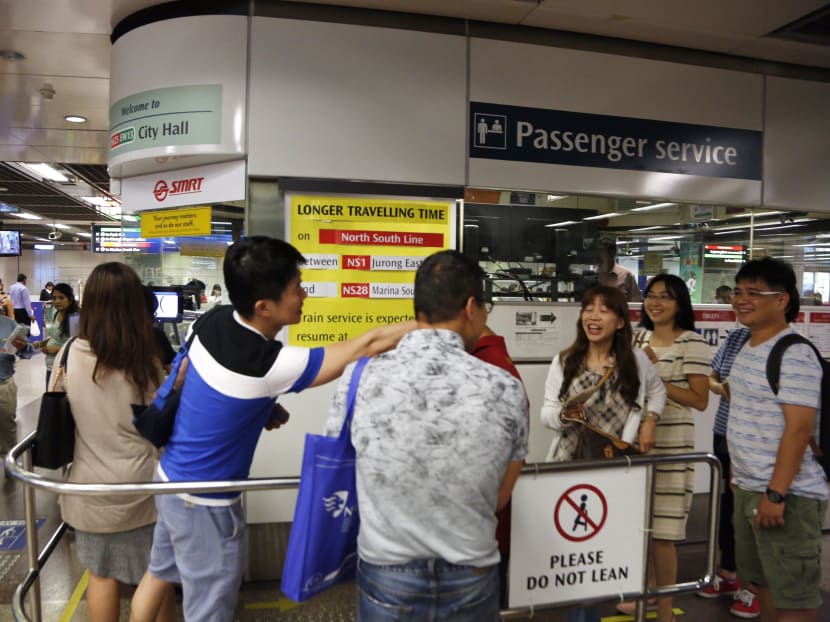Intensive testing among reasons for delay in new signalling system: SMRT
SINGAPORE — The need to customise the system hardware and software alongside intensive testing are some of the reasons behind the delay in the full roll-out of the new signalling system for the North-South Line (NSL).

SMRT staff assisting passengers at City Hall mrt station on alternative transport routes during the North-South Line MRT breakdown on 28 June 2017. Photo: Raj Nadarajan/TODAY
SINGAPORE — The need to customise the system hardware and software alongside intensive testing are some of the reasons behind the delay in the full roll-out of the new signalling system for the North-South Line (NSL).
In a blog post entitled Fine-tuning the New System on Monday (July 10), SMRT Trains’ chief executive officer Lee Ling Wee attempted to explain to commuters the “intricacies of implementing a new signalling system on an existing line”, adding that even his own friends have questioned him why the resignalling project is taking so long.
Calling it a tedious process because “no two railway systems are identical in the way they are designed and operated”, Mr Lee said even though system supplier Thales have had experience working with other overseas operators, they are “unable to simply replicate the well-oiled systems of Taipei, Hong Kong and London, and import those here”.
The system hardware and software used here are also customised for the unique local environment, and have to be tested thoroughly in the laboratory as well as on tracks before being applied during passenger service hours, he added.
The new signalling system promising speedier rides on the NSL and new four-station Tuas West Extension (TWE) was supposed to be rolled out at the end of last year, but has been delayed due to the need for more tests.
Progressive testing of the new system has been carried out for the past three months, with the trials first conducted over the last hour of passenger service. On April 16, the tests were moved to Sundays, before full-day weekday trials started on May 29.
However, train operator SMRT and the Land Transport Authority (LTA) had warned at the end of last month that commuters may expect more delays as the tests may take “few more months”.
After the recent signalling fault which resulted in delays of more than two hours, Mr Lee said his team is working to rectify teething issues that were identified after joint investigations with the Land Transport Authority (LTA) and Thales. Operational workarounds have been developed for these software related issues.
Adding that safety is paramount importance, Mr Lee said SMRT will fine-tune the system to ensure that it can track the exact position, speed and braking distance of all trains on the network.
A software patch has been planned for the coming weeks, and Mr Lee said SMRT is hoping for smooth implementation.
Correction: An earlier version of this story said Mr Lee Ling Wee is SMRT's chief executive officer. That is incorrect. He is the chief executive officer of SMRT Trains. We are sorry for the error.






